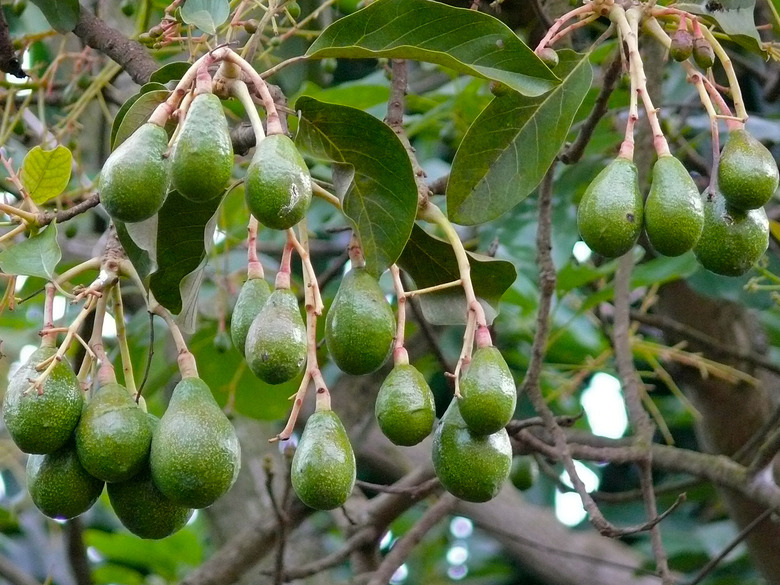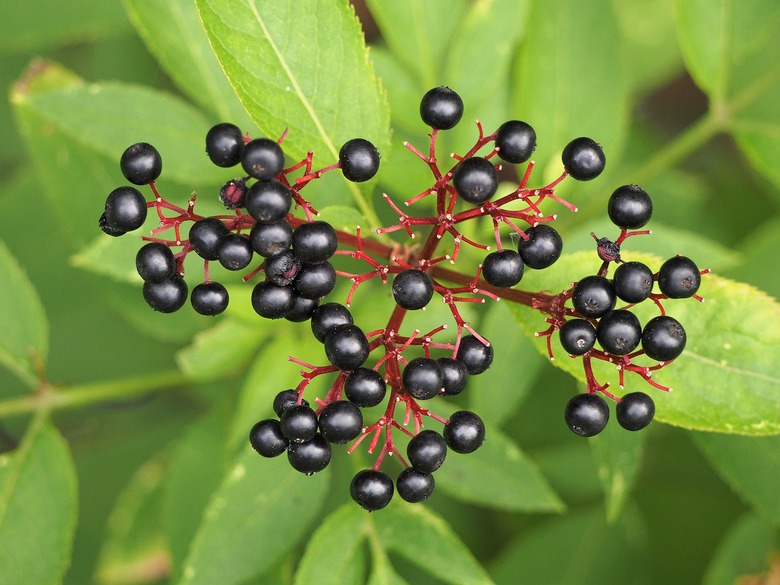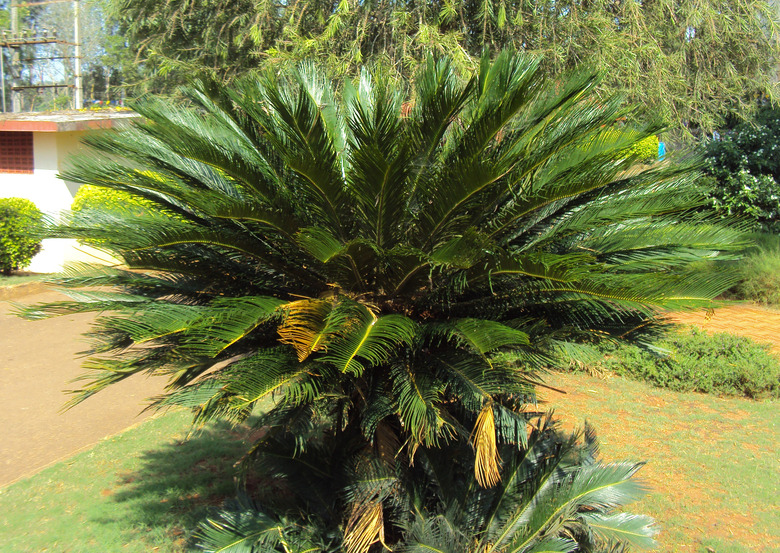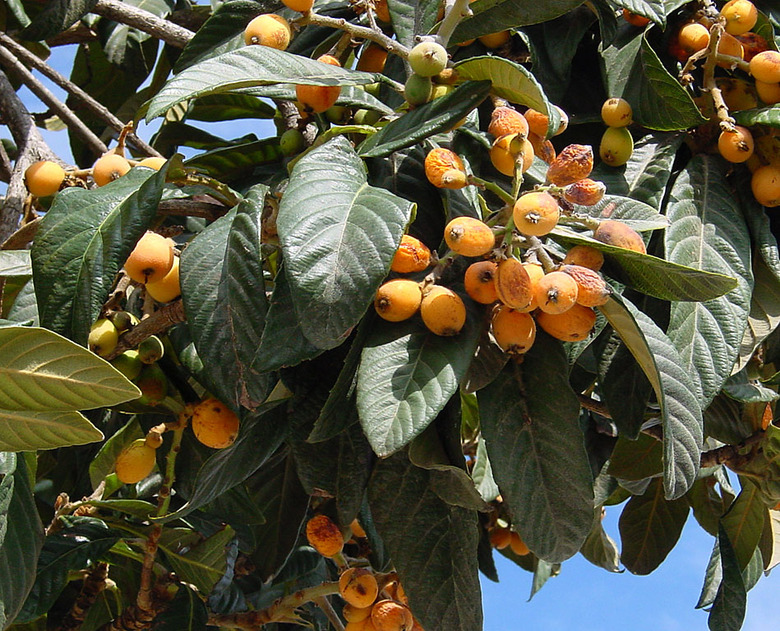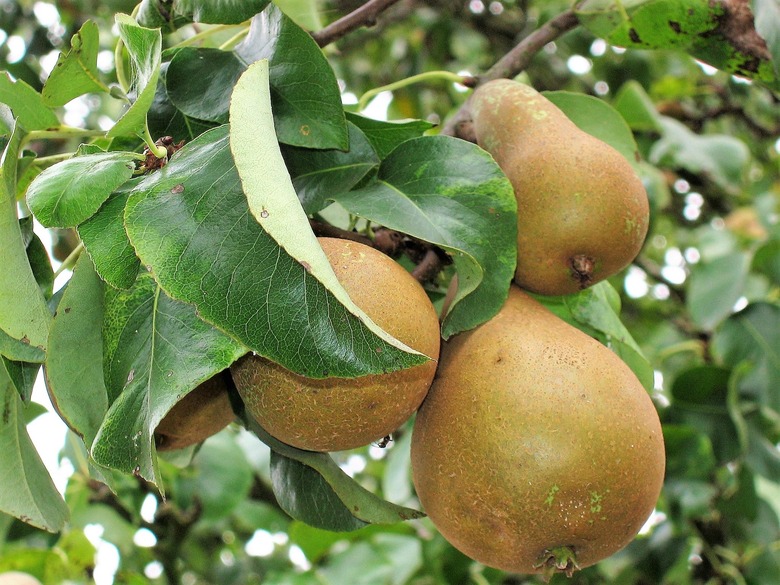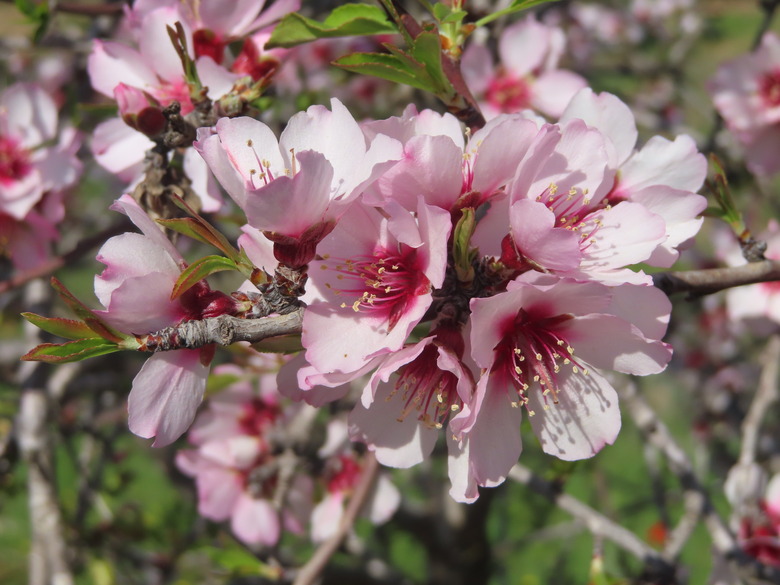Fruit Seeds That Are Poisonous
Tasty fruits from the garden are an asset in the kitchen and a key aspect of healthy living. Despite their benefits, some edible species feature poisonous fruit seeds, which should be removed and discarded or properly processed.
In addition, some plants produce both fruits and seeds that are toxic to humans, pets and livestock.
Arsenic and Amygdalin From Apples
While the flesh of apples (Malus domestica) and crabapples (Malus sylvestris) naturally contain small amounts of arsenic that is absorbed from naturally occurring elements in the soil, the U.S. Food and Drug Administration (FDA) and Environmental Protection Agency (EPA) limit inorganic arsenic to 10 parts per billion.
In general, apples, juice and products made from the fruits are safe to enjoy. The FDA recommends limiting children ages 12 months and older to no more than 4 ounces of 100 percent juice daily or to provide apple slices rather than juice.
Apple seeds, however, do contain amygdalin. Amygdalin is a cyanide and sugar compound that breaks down to hydrogen cyanide (HCN) in the body. Fortunately, one or two apple seeds are unlikely to cause issues even when chewed up and swallowed. It would require approximately 1 cup of seeds obtained from a bushel of apples, ground up to release the toxic compounds, to poison an adult human.
Smaller amounts may cause gastric distress, including cramping, diarrhea and vomiting, so use caution when processing apples to keep the seeds out of reach of children and pets.
- Common names: Apple and crabapple
- Scientific names: Malus domestica and Malus sylvestris
- USDA zones: 3-10, depending on the variety
- Poisonous parts: All parts (particularly the seeds) except the fruits
- Toxic to: Humans, pets and livestock
Avocado Pits and Pets
While there's some debate about the toxicity of avocado fruits and pits (Persea americana), when in doubt, keep out of reach of children, pets and livestock.
All parts of the tree and fruit, except the flesh, contain persin. This oil-based compound is a fungicidal toxin, similar to a fatty acid. While avocados are generally not toxic to humans, dogs and cats, the large seed is a choking hazard.
- Common names: Avocado, alligator pear
- Scientific name: Persea americana
- USDA zones: 10-12
- Poisonous parts: All parts except the fruits
- Toxic to: Birds, rodents, horses and some livestock
Elderberries and Their Seeds
Elderberries (Sambucus spp.) are well-known for the health benefits of the anthocyanins and polyphenols in the berries and seeds. All parts of the various elderberry species, however, are poisonous to humans.
To make elderberries and their seeds edible, cook the fruits to destroy the amygdalin, which is a cyanide-inducing glycoside. In addition, make sure the berries are fully ripened before processing to make juice, liqueurs, sauces and chutneys, syrups or baked goods like pies.
- Common names: Black elderberry, European elder, American elderberry, red elderberry, blue or Mexican elderberry
- Scientific names: Sambucus spp.
- USDA zones: 3-10, depending on the species
- Poisonous parts: All parts of the plant, including the berries and seeds, unless fully ripe and cooked
- Toxic to: Humans, pets, goats, horses and other livestock
King Sago Palm Seeds
King sago (Cycas revoluta) produces golden flower heads that result in red-orange cones or fruits packed with hard, walnut-sized seeds.
While often planted in warm climates as a landscape plant, all parts of the king sago are toxic, especially the seeds. The plants contain BMAA and cycasin, which are poisonous to humans, pets and livestock, and can cause liver failure.
In addition to the extreme toxicity, the seeds are a choking hazard.
- Common names: King sago, sago palm, cycad, Japanese sago palm
- Scientific name: Cycas revoluta
- USDA zones: 9-12
- Poisonous parts: All parts of the plant
- Toxic to: Humans, pets and livestock
Loquat Fruit Seeds
The loquat (Eriobotrya japonica) is a member of the rose family (Rosaceae). Resistant to deer, drought and salt, these large evergreen shrubs produce tasty 1- to 2-inch yellow-orange fruits that contain 1 to 3 large seeds. The flesh is soft and eaten fresh or used in jams and jellies, marmalades, syrups and baked goods.
The hard-shelled seeds, however, contain cyanogenic glycoside and, when cracked and consumed in large amounts, may cause gastric and respiratory distress, twitching and convulsions. Sensitive individuals may suffer from an allergic reaction to the fruits and seeds; while ingesting 1 or 2 seeds is unlikely to result in a toxic dosage, keep out of reach of children.
- Common names: Loquat, pipa, Japanese medlar, Japanese plum
- Scientific name: Eriobotrya japonica
- USDA zones: 8-11
- Poisonous parts: Seeds
- Toxic to: Humans
Pear Species and Seeds
Whether planted for their fruits or as landscape trees, pears (Pyrus spp.) produce fruits ranging from large, soft and juicy, to rounded and crispy, to 1/2- to 1-inch hard pomes, depending on the species and variety.
Like apples, pear seeds contain amygdalin which breaks down into cyanide in the body. Swallowing a seed occasionally is unlikely to harm a human or pet, but ingesting large numbers of seeds can cause reactions ranging from choking to a stomachache and to a potentially fatal illness.
Keep out of reach of children and pets, as they are smaller and less able to tolerate even a few seeds and the resulting reaction from the toxins.
- Common names: Pear, European pear, common pear, Asian pear, Callery or 'Bradford' pear
- Scientific names: Pyrus communis, Pyrus serotina, Pyrus pyrifolia, Pyrus calleryana
- USDA zones: 3-9, depending on the species and variety
- Poisonous parts: Seeds
- Toxic to: Humans and pets
Warning
While Callery pears have been planted as landscape trees due to their ornamental value and attractive blossoms in spring, they are also highly invasive, thorny and have a strong unpleasant scent when flowering.
Pits of Prunus Fruits: Almonds, Cherries, Nectarines, Peaches and Plums
The Prunus species include almonds, cherries, nectarines, peaches, and plums. All members of the Prunus family produce a large, hard-shelled pit.
While the fruits are delicious, the kernel inside the pits contains amygdalin, which converts to cyanide compounds when the pit is cracked or crushed and ingested. The pits are also choking hazards. Whether a cherry or a peach pit, poisoning requires quick action; consult with the local human or pet poison control center for treatment advice.
Almonds harvested from bitter almond trees (Prunus amygdalus var. amara) contain significantly more amygdalin than sweet almonds (Prunus amygdalus var. dulcis). Raw bitter almonds are easily distinguished by the bitter flavor and should not be eaten. Home-grown sweet almonds are safe to eat when dried or roasted. The orange fruits of almond trees are leathery and generally not eaten by humans.
- Common names: Varies by species
- Scientific name: Prunus species
- USDA zones: 4-9, depending on the species and variety
- Poisonous parts: All parts except the fruits
- Toxic to: Humans, pets, horses
References
- Inhabitat: Are You Accidentally Eating the Toxic Parts of Fruits and Veggies?
- FDA: What You Can Do to Limit Exposure to Arsenic and Lead from Juices
- PickYourOwn.org: Cyanide, Arsenic, and Other Toxins in Fruit: Apple Seeds, Peach Pits, Cherry Pits, etc.: Facts, Myths and Old Wive's Tales. Find Out the Truth!
- ASPCA: Poisonous Plants
- Pet Poison Helpline: Avocado
- Topics in Subtropics: What Avocado Growers Knew All Along
- University of Illinois College of Veterinary Medicine: Keep Teflon, Avocado, Lead, and Zinc Away From Pet Birds
- BBC Good Food: How to Pick and Cook Elderberries
- Norm's Farms: Are Elderberry Bushes Poisonous?
- North Carolina Extension Gardener Plant Toolbox: Cycas revoluta
- North Carolina Extension Gardner Plant Toolbox: Eriobotrya japonica
- Nourish by WebMD: Health Benefits of Loquat
- American Kennel Club: Can Dogs Eat Pears?
- Penn State Extension: Callery Pear

